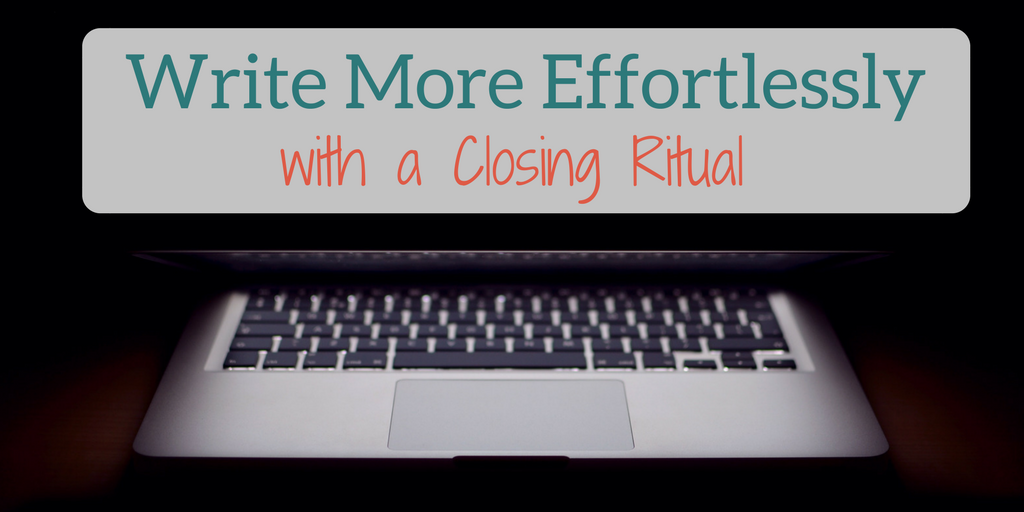In another post, I describe how using an opening routine can help you start your writing session more easily. But there’s something else that I do at the end of each session–my closing routine–that makes my opening routine possible. You see, at the end of each writing session, I not only track what I wrote and for how long, but I also commit to my next writing session (which I set during my weekly writing review), and I set concrete goals (or actionable steps) for my next session.
You see, my opening routine only works because I set my actionable steps at the end of the previous session. When I start a session, I don’t waste precious writing time reviewing what I wrote before, or trying to identify what I should do. Instead, I merely copy down my “next steps” from the previous session’s closing routine as my session goal, and get to work.
In fact, it’s so important that it’s on my list of 7 writing habits for scholars to cultivate.
Ready to implement your own closing routine? Here’s what it needs to consist of and why.
Closing Routine, Element 1: Commit to Your Next Writing Session
At the end of each writing session, I commit to my next session, for two reasons. First, doing so makes my next session more of a priority in my mind. Second, and more importantly, reminding myself of my next session helps me mentally separate “should be working” times from non-work times.
Academic writing and intellectual work can be done at any time. All too often, then, scholars (especially junior ones) struggle to mentally switch into “life” mode. You’re hanging out with family or friends, but you feel guilty for not writing. Put simply: you cannot fully enjoy time away from your work because you always “could” be working, so thoughts continually nag you that you “should” be writing.
Squash these pernicious, negative thoughts with a closing routine.
Identifying the date and time you will write next helps you interrupt this thought pattern because you have a definite response when it arises.
Thought: Ugh, I should be writing my article right now.
You: No, thought. My next session is tomorrow at 9am. I know what I will be doing then, so I do not need to worry about it now.
Try it out. It works similar to Cal Newport’s nightly shutdown routine.
Closing Routine, Element 2: Set Your “Next Steps” or Action Items
How many times has this happened to you? You’re working on a journal article and finish a great session. You know where you’re going with your project and what you need to do next. But then the very next day you sit down with only a vague sense of what you did the previous day. You spend 15 minutes (or more!) rereading what you wrote, trying to remember where you thought you were going. Before you know it, you’re 45 minutes into a writing session and you haven’t written anything yet!
We tend to underestimate how much we will forget during time away from a project. I never have as clear a picture about what I need to do next on the project than I do toward the end of a session. So, why not capture it in the moment, when my concrete next steps are clearest?
Writing out your next steps or concrete action items for your next session will reduce reinitiation overhead: the time you waste getting yourself caught back up on the project–precious time you could spend writing, instead of figuring out what to write.
As I lay out in my article on setting product-focused weekly goals, “action steps” are small, product-focused concrete tasks you could sit down and begin writing immediately. For example: “write footnote on the history of term Z” and “close read passage A through lens X” are action steps. “Write my article” or even “write the next paragraph” are not; they are too broad.
Closing Routine: Your Turn!
Do you already use a closing routine? Does it include the elements described above? What questions do you have about developing and implementing a closing routine? Let me know in the comments below or by email.
As always, if you found the information in this article useful, I bet a friend would, too! I’d be so grateful if you’d use the buttons below to share this article with a colleague, writing partner, or group who you think would benefit from a closing routine.
